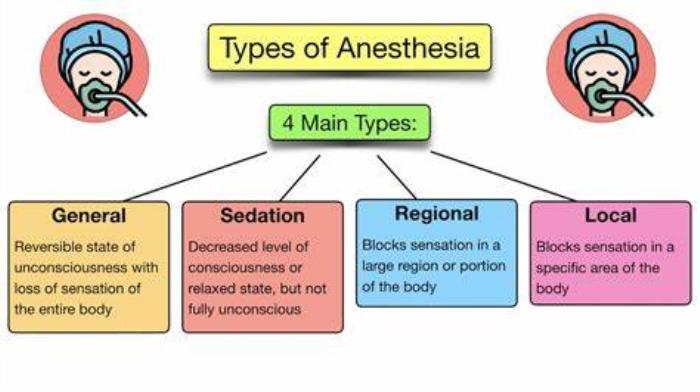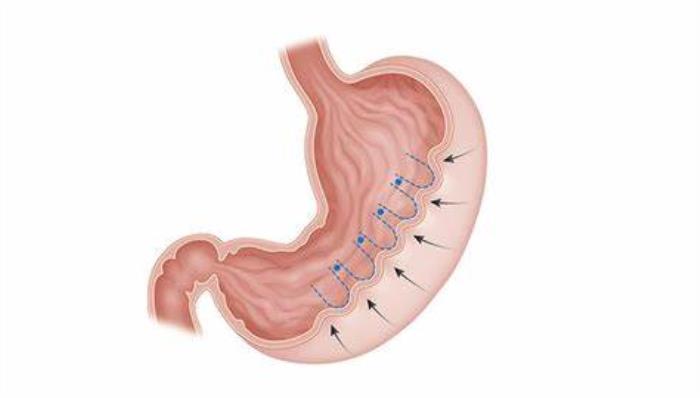Anesthesia plays a crucial role in ensuring the safety and comfort of patients undergoing Endoscopic Sleeve Gastroplasty (ESG). As ESG is a minimally invasive procedure that involves significant manipulation of the stomach through an endoscopic approach, anesthesia is necessary to prevent discomfort and allow the surgeon to perform the procedure efficiently. The choice and management of anesthesia are important to minimize risks and ensure the procedure is smooth and successful, making it an essential aspect of ESG.
Medical disclaimer: This content is for general awareness and does not replace a doctor’s consultation. For diagnosis or treatment decisions, consult a qualified specialist.
Overview of Endoscopic Sleeve Gastroplasty: A Minimally Invasive Procedure
Endoscopic Sleeve Gastroplasty (ESG) is a weight loss procedure that reduces the size of the stomach without the need for surgical incisions. Instead, the procedure is performed using an endoscope, which is a flexible tube equipped with a camera and suturing device, inserted through the mouth and into the stomach. The stomach is then stitched to create a smaller, sleeve-like shape. ESG helps patients lose weight by limiting food intake and promoting feelings of fullness. This less invasive alternative to traditional bariatric surgery generally results in quicker recovery and fewer complications.
Types of Anesthesia Used in ESG: General vs. Local
Anesthesia options for ESG typically include general anesthesia and local anesthesia with sedation. General anesthesia is the more common approach for this procedure, where the patient is completely unconscious during the operation. Alternatively, some patients may be candidates for local anesthesia combined with conscious sedation, which numbs the throat area while providing sedation to relax the patient. However, due to the nature of the procedure, general anesthesia is most often preferred to ensure the patient's safety and comfort throughout the process.

General Anesthesia: What to Expect During ESG
During ESG, general anesthesia is administered by an anesthesiologist to render the patient fully unconscious and pain-free. The patient will be intubated, allowing the anesthesiologist to manage breathing throughout the procedure. Once the patient is under general anesthesia, the endoscopic procedure begins, and the surgeon can focus on reshaping the stomach without causing discomfort. Patients will not feel or remember the procedure and will be closely monitored by the anesthesia team throughout, ensuring a controlled and safe environment.
Why General Anesthesia is the Preferred Option for ESG
General anesthesia is the preferred option for ESG because it provides complete control over the patient's pain management and comfort. Given the complexity of manipulating the stomach and placing sutures, general anesthesia ensures that the patient remains still and relaxed, preventing any movement that could interfere with the procedure. Additionally, by using general anesthesia, the surgeon can perform the procedure more efficiently, with less risk of patient discomfort or complications, making it the safest and most effective choice for most ESG cases.

The Role of Sedation in Ensuring Patient Comfort
Sedation plays a significant role in patient comfort during endoscopic procedures. In cases where local anesthesia is used, sedation helps keep the patient calm and relaxed while remaining conscious. For those undergoing general anesthesia, the sedation is part of the anesthetic process, allowing the patient to be fully unconscious. Sedation not only minimizes anxiety and discomfort but also ensures that the procedure can be performed in a controlled environment, with the patient unaware of any sensations. This contributes to a smoother experience and faster recovery post-procedure.
Local Anesthesia with Sedation: An Alternative to General Anesthesia?
For patients undergoing endoscopic sleeve gastroplasty (ESG), local anesthesia with sedation may be a viable alternative to general anesthesia. This method involves numbing the area and using light sedation to keep the patient comfortable without rendering them unconscious, which may reduce recovery time and anesthesia-related risks.

Risks and Benefits of General Anesthesia in ESG
General anesthesia is commonly used in ESG procedures to ensure patient comfort. While it offers complete sedation, minimizing awareness and movement, it does carry risks such as allergic reactions, breathing problems, or longer recovery times. However, for many patients, the benefits of complete sedation outweigh the risks.
Preparing for Anesthesia Before Your ESG Procedure
Before undergoing anesthesia for ESG, patients need to prepare by following instructions from their medical team, such as fasting for a set number of hours before the procedure. Medical evaluations, including blood tests and a physical examination, may be required to ensure that the patient is healthy enough for anesthesia.

How Anesthesiologists Assess Patient Eligibility for Anesthesia
Anesthesiologists carefully assess each patient’s medical history, including any chronic conditions, allergies, and previous reactions to anesthesia, to determine the safest anesthesia plan. They also consider factors like age, weight, and overall health when deciding between general anesthesia and alternatives like sedation.
What Happens During the Anesthesia Process in ESG?
During ESG, patients under general anesthesia are completely unconscious, while those opting for sedation may remain in a twilight state, unaware of the procedure but able to breathe on their own. The anesthesia team monitors vital signs closely, ensuring patient safety throughout the process.
Recovery from Anesthesia After ESG: What to Expect
After ESG, patients typically experience a recovery phase where the anesthesia wears off. Those who had general anesthesia may feel groggy, nauseous, or disoriented for a few hours, while patients who received sedation often recover more quickly and with fewer side effects.
Common Side Effects of Anesthesia and How to Manage Them
Side effects from anesthesia, whether general or sedation, can include nausea, dizziness, headaches, and temporary memory loss. These side effects are usually mild and resolve on their own. Patients can manage these symptoms by staying hydrated, resting, and following their doctor’s post-procedure instructions.
Comparing Anesthesia in ESG with Other Bariatric Procedures
In comparison to other bariatric procedures like gastric bypass or sleeve gastrectomy, which often require longer periods under general anesthesia, ESG typically involves a shorter time under anesthesia, which can lower the risk of complications and side effects.
Safety Considerations: Minimizing Risks Associated with Anesthesia
To minimize anesthesia risks, patients should disclose their full medical history, including any medications or supplements they are taking, to the anesthesia team. This helps tailor the anesthesia approach to each patient’s unique health profile, ensuring a safer procedure.
Monitoring During and After ESG: The Role of the Anesthesia Team
The anesthesia team plays a critical role during and after the ESG procedure. They monitor the patient’s heart rate, blood pressure, and oxygen levels during surgery and continue to observe vital signs in recovery to ensure a smooth transition from sedation or anesthesia back to consciousness.
Patient Experiences: Anesthesia Comfort and Recovery in ESG
Many patients report feeling comfortable during ESG with anesthesia, noting that the procedure itself is pain-free. Recovery from anesthesia is typically well-tolerated, with most patients returning home the same day. Personal experiences may vary based on the type of anesthesia used and individual health factors.
Special Considerations for High-Risk Patients and Anesthesia in ESG
Patients with certain risk factors, such as obesity, sleep apnea, or cardiovascular conditions, may require special anesthesia considerations. Anesthesia plans are customized to reduce potential complications, and high-risk patients are often closely monitored both during and after the procedure.
Post-Procedure Care: Managing Anesthesia Effects and Recovery
After ESG, patients should rest and avoid driving or making important decisions for 24 hours due to lingering anesthesia effects. Drinking plenty of fluids, eating small meals, and following specific post-operative care instructions can help speed up recovery and minimize discomfort.
Conclusion: Choosing the Right Anesthesia Option for ESG
Choosing the appropriate anesthesia option for ESG depends on individual patient needs and health factors. While general anesthesia is common, local anesthesia with sedation may be a safer option for some. Consultation with an experienced anesthesia team ensures a personalized, safe, and comfortable experience during ESG.
Exploring New Technologies in Endoscopic Sleeve Gastroplasty
Discover the latest technologies enhancing Endoscopic Sleeve Gastroplasty. This section highlights innovative tools and techniques that improve the effectiveness and safety of the procedure, paving the way for better outcomes in weight loss and patient satisfaction.
Impact of Endoscopic Sleeve Gastroplasty on Comorbid Conditions
Learn about the positive impact of Endoscopic Sleeve Gastroplasty on comorbid conditions associated with obesity. This section examines how the procedure can help alleviate health issues such as type 2 diabetes, hypertension, and sleep apnea, promoting a healthier lifestyle post-surgery.
Best Endoscopic Sleeve Gastroplasty in India
The Best Endoscopic Sleeve Gastroplasty in India is a non-surgical, minimally invasive weight loss procedure that reduces stomach size, helping patients achieve significant weight loss without the need for incisions.
Best ESG Hospitals in India
The Best ESG Hospitals in India are equipped with advanced technology and skilled endoscopic specialists, offering comprehensive care from initial consultation to post-procedure follow-up for effective weight management.
Best ESG Surgeons in India
The Best ESG Surgeons in India are highly trained in advanced endoscopic techniques, offering personalized care to help patients achieve their weight loss goals safely and effectively.
FAQ:
What type of anesthesia is used for endoscopic sleeve gastroplasty?
General anesthesia is commonly used, but some patients may opt for local anesthesia with sedation.
Is general anesthesia safe for ESG?
Yes, general anesthesia is generally safe for ESG, though there are risks, especially for patients with underlying health conditions.
Can I undergo ESG with local anesthesia and sedation instead of general anesthesia?
Yes, in some cases, local anesthesia with sedation is an option, offering a less invasive alternative with a quicker recovery.
What should I expect in terms of recovery from anesthesia after ESG?
Patients typically recover from anesthesia within a few hours, though some may experience mild side effects like nausea or grogginess.
Are there any risks or side effects related to anesthesia during ESG?
Common side effects include nausea, dizziness, and grogginess, though serious complications are rare with proper monitoring and care.